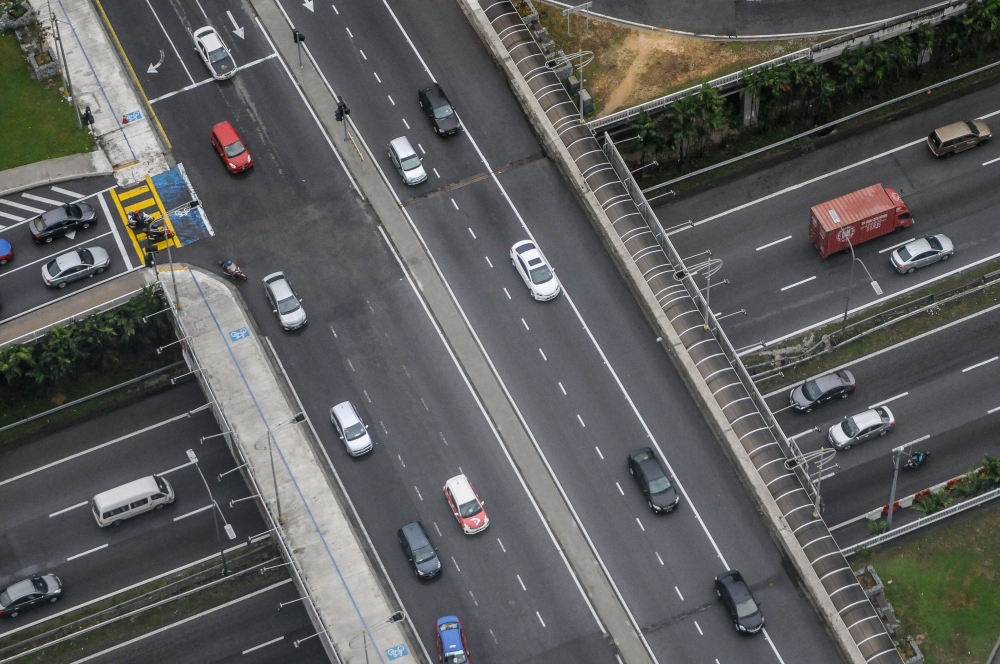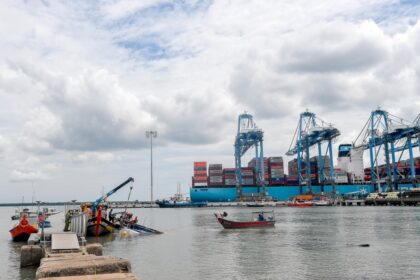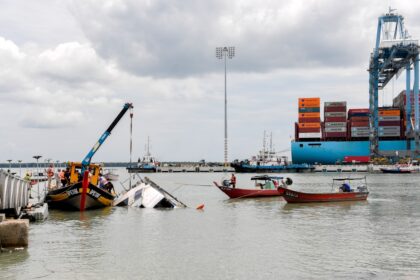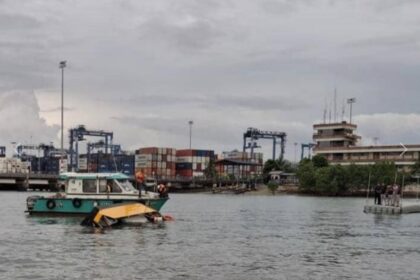KUALA LUMPUR, May 13 — With motor insurance premiums set to rise — it’s now a matter of when, not if — Malaysian motorists must come to terms with the fact that the rising number of traffic accidents will only speed up the inevitable.
To put things into perspective, Bukit Aman’s Traffic Investigation and Enforcement Department recorded 598,635 road accidents nationwide in 2023 — averaging 1,640 accidents a day.
More often than not, these incidents are the result of reckless driving or a lapse in awareness, spanning across all vehicle types.
In a bid to reinforce good road habits for everyone’s safety, Malay Mail revisits some of the core principles from Malaysia’s driving curriculum that many motorists seem to have forgotten.
The rules of defensive driving
Defensive driving — also known as prudent driving — boils down to four key rules: maintaining distance, overtaking safely, navigating junctions, and avoiding head-on collisions.
1. Maintaining distance
This is where the well-known two-second and four-second rules come in.
These guidelines help drivers maintain a safe following distance, giving them time to react to sudden stops or hazards.
The two-second rule applies in normal driving conditions — maintain at least two seconds of space between your vehicle and the one in front.
The four-second rule should be followed in adverse conditions (e.g. rain, poor visibility, towing a vehicle).
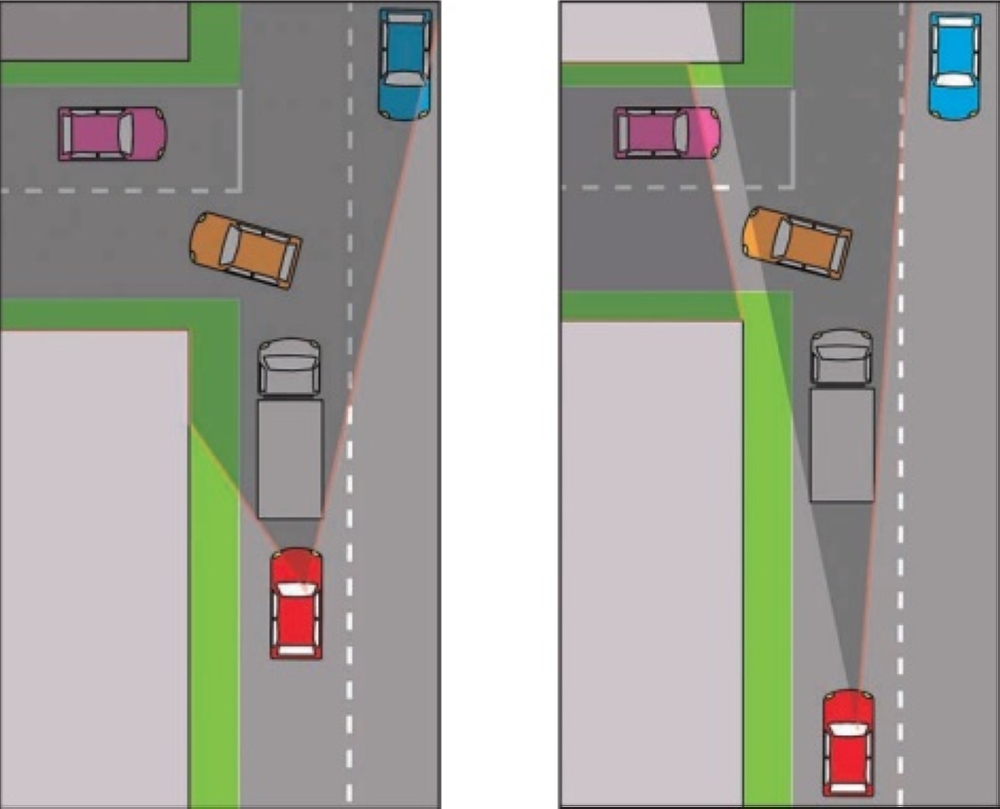
2. Overtaking properly
Many drivers ignore the correct steps for overtaking, often overestimating their own skills and underestimating the reactions of others — a mix that frequently leads to collisions.
Drivers should follow the CITO routine:
- Cermin (check mirrors)
- Isyarat (use indicators)
- Titik Buta (check blind spots)
- Olahgerak (execute manoeuvre)
There’s also the 12-second rule — look ahead 12 seconds to assess whether overtaking is safe.
Never overtake near pedestrian crossings, intersections, bends, uphill roads, or where double white lines are marked.
3. Junction rules
At a T-junction, vehicles going straight have the right of way, followed by those turning into the intersection, and lastly, those turning out.
It’s essential to choose the correct lane and use your indicators early when approaching a junction.
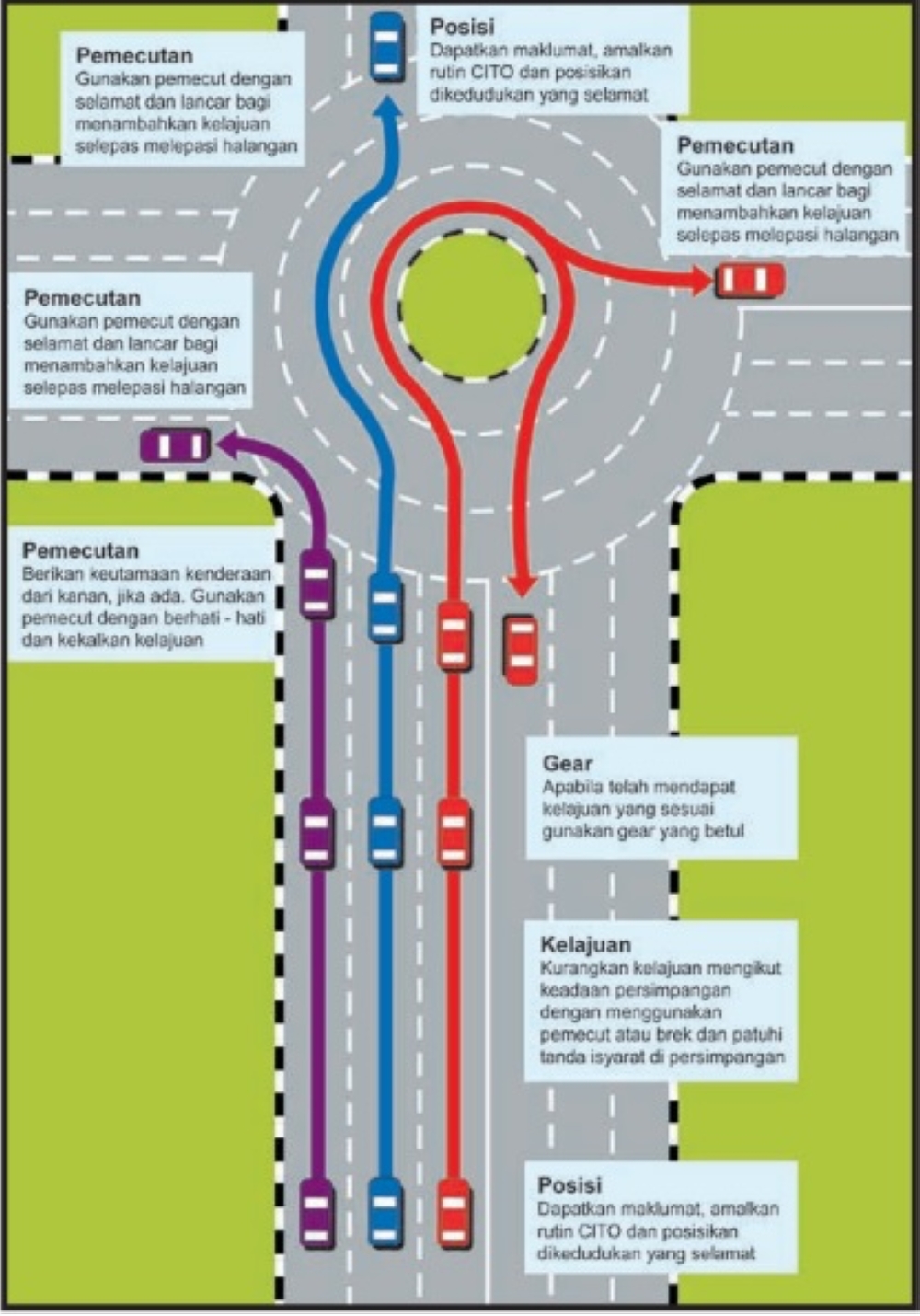
Even when you have right of way, reduce speed. Others may cut in or speed unexpectedly, risking both collisions and traffic jams.
4. Avoiding frontal collisions
In a dangerous situation, drivers should attempt to steer right to avoid a direct head-on crash — even if it means sacrificing your own lane position for safety.
Know your lanes, use your indicators
The golden rule: Keep left unless overtaking.
Staying unnecessarily in the fast (rightmost) lane or middle lane is an offence in Malaysia.
Commonly referred to as lane hogging, it impedes faster vehicles and increases the risk of rear-end collisions.
Once overtaking is complete, move back to the left lane.
The leftmost lane — or driving lane — is meant for regular cruising at your intended speed.
Heavy vehicles must stay in this lane and are not allowed in the right lane except when overtaking.
Misunderstanding road markings is another common issue:
- Dotted white lines = lane change allowed
- Double solid white lines = overtaking prohibited
Many drivers also neglect their signal indicators, wrongly assuming others can anticipate their moves.
Using indicators early helps others adapt — sudden lane changes without warning are a major cause of road accidents.
Driving in adverse weather
One common error: using hazard lights in the rain. This is not only illegal unless your vehicle is stationary, but it also confuses other drivers.
Speeding during rain increases the risk of aquaplaning — where your tyres lose contact with the road due to a layer of water, making braking and steering nearly impossible.
Source:  Crashes are up in Malaysia: Do you still remember what you learned in driving school? (Be honest)
Crashes are up in Malaysia: Do you still remember what you learned in driving school? (Be honest)
